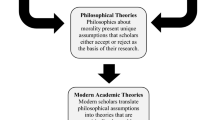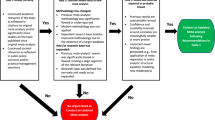Abstract
This paper incorporates morale into a standard principal-agent model. When morale is observable, the worker’s effort level, the optimal piece rate, and the firm’s expected profits are all generally increasing in the worker’s level of morale. Furthermore, under reasonable conditions, higher-morale individuals are more responsive to incentives. Finally, when considering morale interdependence, conditions are derived which determine optimal organization strategies in terms of pooling or separating workers, and corresponding staffing policies are discussed.
Similar content being viewed by others
References
Akerlof GA, Kranton RE (2005) Identity and the economics of organizations. J Econ Perspect 19(1): 9–32
Aron DJ (1987) Worker reputation and productivity incentives. J Labor Econ 5(4): S87–S106
Bateson G, Mead M (1941) Principals of moral building. J Educ Soc 15(4): 206–220 (Civilian Morale)
Benabou R, Tirole J (2003) Intrinsic and extrinsic motivation. Rev Econ Stud 70: 489–520
Besley T, Ghatak M (2005) Competition and incentives with motivated agents. Am Econ Rev 95(3): 616–636
Bewley TF (1999) Work motivation. Cowles foundation discussion paper #1209. Yale University, New Heaven
Bolton GE, Ockenfels A (2000) ERC: a theory of equity, reciprocity, and competition. Am Econ Rev 90(1): 166–193
Brown EHP (1949) Morale, military, and industrial. Econ J 59(233): 40–55
Brown J, Rowlinson M (1976) The morale of patients following open-heart surgery. J Health Soc Behav 17(2): 134–144
Costello TW, Kubis JF, Shaffer CL (1963) An analysis of attitudes toward a planned merger. Adm Sci Q 8(2): 235–249
Delfgaauw J, Dur R (2007) Signaling and screening of workers, motivation. J Econ Behav Organ 62: 605–624
Delfgaauw J, Dur R (2008) Incentives and workers, motivation in the public sector. Econ J 118: 171–191
Fang H, Moscarini G (2005) Morale hazard. J Monet Econ 52: 749–777
Fehr E, Schmidt KM (1999) A theory of fairness, competition, and cooperation. Q J Econ 114(3): 817–868
Frank RH (1985) Choosing the right pond: human behavior and the quest for status. Oxford University Press, New York
Frey BS (1993) Shirking or work morale? The impact of regulating. Eur Econ Rev 37: 1523–1532
Gibbons R (1997) Incentives and careers in organizations. In: Kreps DM, Wallis KF(eds) Advances in economics and econometrics: theory and applications, seventh world congress, vol 2. Cambridge University Press, NY, pp 1–37
Hightower RL (1944) A sociological conception of morale. Soc Forces 22(4): 410–415
Hocking WE (1941) The nature of morale. Am J Soc 47(3): 302–320
Kerr S (1975) On the folly of rewarding A, while hoping for B. Acad Manage J 18(4): 769–783
Loomes G, Sugden R (1982) Regret theory: an alternative theory of rational choice under uncertainty. Econ J 92(368): 805–824
Loomes G, Sugden R (1986) Disappointment and dynamic consistency in choice under uncertainty. Rev Econ Stud 53(2): 271–282
Miller DC (1940) Personality factors in the morale of college-trained adults. Sociometry 3(4): 367–382
Miller DC (1941) Economic factors in the morale of college-trained adults. J Soc 47(2): 139–156
O’Donoghue T, Rabin M (1999) Doing it now or later. Am Econ Rev 89(1): 103–124
Pemberton J (1985) A model of wage and employment dynamics with endogenous preferences. Oxf Econ Pap 37(3): 448–465
Pope AU (1941) The importance of morale. J Educ Soc 15(4): 195–205 (Civilian Morale)
Prendergast C (1999) The provision of incentives in firms. J Econ Lit 37: 7–63
Prendergast C (2002) The tenuous tradeoff between risk and incentives. J Pol Econ 110(5): 1071–1102
Shister J (1950) Trade union policies and nonmarket values (Can capitalism dispense with Free Labor Markets?) Am Econ Rev 40(2). Papers and proceedings fo the sixty-second annual meeting of the AEA, pp 292–305
Slichter SH (1920) Industrial morale. Q J Econ 35(1): 36–60
Sleek S (1998) APA Monitor, July 1998, 29(7)
Stewart J (1999) Adverse selection and pay compression. South Econ J 65(4): 885–899
Straka JW (1993) Is poor worker morale costly to firms? Ind Labor Relat Rev 46(2): 381–394
Young K (1940) Personality and problems of adjustment. F.S. Crofts and Company, NY, pp 602–603
Author information
Authors and Affiliations
Corresponding author
Rights and permissions
About this article
Cite this article
Stowe, C.J. Incorporating morale into a classical agency model: implications for incentives, effort, and organization. Econ Gov 10, 147–164 (2009). https://doi.org/10.1007/s10101-008-0058-3
Received:
Accepted:
Published:
Issue Date:
DOI: https://doi.org/10.1007/s10101-008-0058-3




